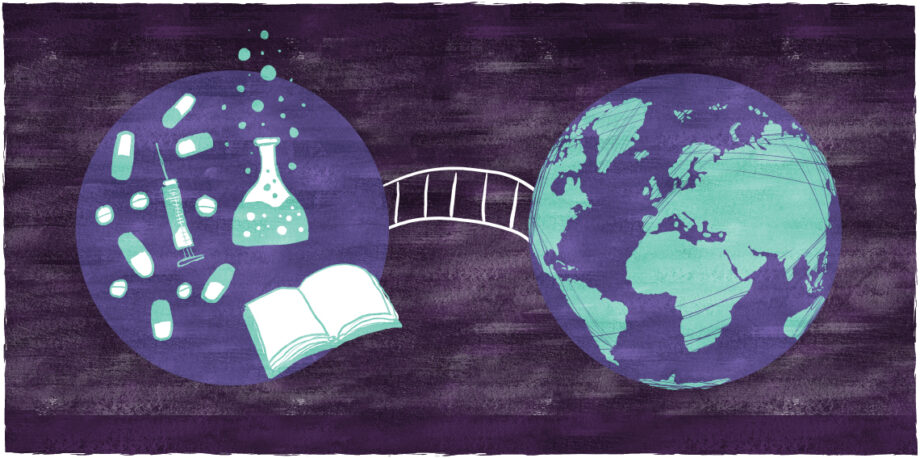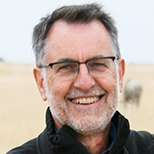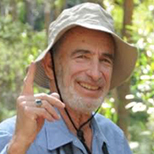March 18, 2016 — —  Editor’s note: This Voices piece is published in collaboration with the academic journal Elementa. It is based on “Avoiding collapse: Grand challenges for science and society to solve by 2050,” a peer-reviewed article published March 15 as part of Elementa’s Avoiding Collapse special feature.
Editor’s note: This Voices piece is published in collaboration with the academic journal Elementa. It is based on “Avoiding collapse: Grand challenges for science and society to solve by 2050,” a peer-reviewed article published March 15 as part of Elementa’s Avoiding Collapse special feature.
Until recently, Earth was so big compared with humanity’s impacts that its resources seemed limitless. But that is no longer the case. Thanks to rapid growth in both human population and per capita consumption, we are now on the edge of irrevocable damage to our planetary life support systems. If we want to avoid locking in long-lasting impacts, it is imperative that we quickly solve six intertwined problems: population growth and overconsumption, climate change, pollution, ecosystem destruction, disease spillovers and extinction.
The Challenges
Most pressing among these today is climate change. Since the Industrial Revolution, we have produced most of the energy we need by burning fossil fuels. This has added carbon dioxide and other greenhouse gases to the atmosphere at a pace 200 times faster than what was normal for Earth’s pre-industrial carbon cycle. As a result, we are now changing climate faster than people have ever experienced since our ancestors became Homo sapiens. Already the changing climate is manifesting as more frequent floods, wildfires and heat waves that kill thousands of people annually; rising sea levels that displace communities and cost hundreds of billions of dollars for coastal infrastructure building and repair; and increasingly acid oceans, which in some places are becoming so acidic that oyster and scallop fisheries are beginning to collapse.
Fertilizers, herbicides, pesticides, pharmaceuticals, industrial chemicals and trash have contaminated even the most remote environments of the world.
With no change in course, present emissions trajectories will likely, by mid-century, heat the planet to a level that humans and most other contemporary vertebrate species have never experienced, inhibiting food production and greatly multiplying other climate-change problems, including exacerbating global conflict and national security concerns. Indeed, if the present climate-change trajectory continues to 2100, Earth will be hotter than it has been in at least 14 million years, and large regions will be too hot to support human life outdoors.
Meanwhile, human consumption of natural resources is creating a plethora of other types of pollution as well. More than 6 million people die each year from the health effects of air pollution from burning fossil fuels. Our solid waste — increasingly plastic and electronic — has created burgeoning landfills and massive trash gyres in the middle of the oceans. Fertilizers, herbicides, pesticides, pharmaceuticals, industrial chemicals and trash have contaminated even the most remote environments of the world. Whales and polar bears harbor toxins in their tissues; Arctic lakes far from any human settlements exhibit elevated nitrogen levels.
The harm we’re doing to nature is coming back to haunt us in the form of infectious disease risk as well. Increasing encroachment of humans into previously little-touched ecosystems is leading to more frequent and severe “spillovers” of disease from nonhuman to human communities. Climate change is further increasing the odds that novel diseases will crop up in humans and the plants and animals on which we depend: Many of the world’s diseases are tropical in origin, and as we build roads and destroy habitats in the tropics, we increase the probability of exposure. Reverse spillover from humans to animals is an issue as well — an increasing number of animals are afflicted with antibiotic-resistant forms of bacteria.
Finally, meeting human demand for food, housing, water and other goods and services has transformed more than half of the planet into farms, cities, roads and dams. This ecosystem transformation, along with poaching, overfishing and generally exploiting nature for short-term profit, has accelerated the extinction rate of wild animals and plants to levels not seen since the dinosaurs died out. The result has been tremendous loss of ecosystem services such as water filtration, pollination of crops, control of pests and emotional fulfillment. Should present rates of extinction continue, in as little as three human lifetimes Earth would lose three out of every four familiar species (for example, vertebrates) forever.
Overarching Challenges
Contributing to all of these are two overarching challenges: the number of people in the world and our ecological footprints — especially the excessively large per capita ecological footprints in high-income countries.
To feed that many more people under business-as-usual food production, distribution and wastage would require converting even more of Earth’s lands to agriculture and overfishing more of the sea.
Human population has nearly tripled in just one lifetime, and almost a quarter of a million more people are being added every day. Best-case scenarios indicate that by 2050 the planet will have to support at least 2 billion to 3 billion people more than it does today.
To feed that many more people under business-as-usual food production, distribution and wastage would require converting even more of Earth’s lands to agriculture and overfishing more of the sea. There simply isn’t enough productive land left to accomplish that, or enough of the species we like to eat left in the ocean, especially in the face of climate stresses that agriculture and aquaculture have not yet witnessed.
Maintaining present rates of consumption — let alone raising standards of living for billions of poor people today — is similarly problematic. Continuing currently accepted norms of manufacturing goods and services into the future would dramatically increase what already are dangerous levels of environmental contamination worldwide and deplete water and other critical natural resources we depend upon today.
Beyond Breakthroughs
How can science and society solve these intertwined problems and avoid environmental tipping points that would make human life infinitely more difficult?
Solutions will require scientific and technological breakthroughs — but breakthroughs will not be enough. On a global scale, obstacles include political, economic and social factors, including inequalities in economic opportunities and land tenure rights, or poor distributional infrastructure — problems science alone can’t solve. In addition to science, solutions will require effective collaboration of environmental and physical scientists with social scientists and those in the humanities.
In other words, we must recognize the interrelated facets of seemingly distinct issues. We must actively exchange information among practitioners in academics, politics, religion and business and other stakeholders to connect different pieces of the solutions puzzle that are emerging from different specialties.
In addition, people outside the scientific community must recognize and accept that the problems are serious and that solutions are at hand.
That means we within academia must link our work with stakeholders in ways that elicit significant action. This is especially important, since guiding the planet for the future will likely require some fundamental changes — not just in human economic and governance systems, but also in societal values. Engagement with religious leaders, local communities and businesses, subnational groups, and the military and security sectors of society is critically important to further these necessary conversations and impel action.
It is no longer enough to simply do the science and publish an academic paper. That is a necessary first step, but it moves only halfway toward the goal of guiding the planet toward a future that is sustainable.
The good news is we are already making progress in both areas. Scientists and others are coming together to propose and pursue solutions. And three initiatives have been constructed specifically to bridge the science-society divide. The Millennium Alliance for Humanity and Biosphere was founded specifically to connect scientists, humanists, activists and civil society in order to foster positive global change. The Consensus for Action provides a venue for policy-makers to quickly digest why it is essential to immediately address the issues described here; for scientists to communicate to policy-makers throughout the world the importance of dealing with these key environmental issues; and for members of the public to voice their support to policy-makers for taking action. And Mapping the Impacts of Global Change: Stories of Our Changing Environment as Told By U.S. Citizens provides rapid and locally relevant information to everyone, from the general public to political leaders, about how these threats to humanity’s life support systems play out.
In summary, it is no longer enough to simply do the science and publish an academic paper. That is a necessary first step, but it moves only halfway toward the goal of guiding the planet toward a future that is sustainable for both human civilization and the biosphere. To implement knowledge that arises from basic research, we must establish dialogues and collaborations that transcend narrow academic specialties and bridge between academia, industry, the policy community and society in general.
Now is the time to rise to these scientific and communication challenges. The trajectories of population overgrowth, climate change, ecosystem loss, extinctions, disease and environmental contamination have been rapidly accelerating over the past half-century. If not arrested within the next decade, their momentum may prevent us from stopping them short of disaster.
![]()
Editor’s note: The views expressed here are those of the author and not necessarily of Ensia. We present them to further discussion around important topics. We encourage you to respond with a comment below, following our commenting guidelines, which can be found here. In addition, you might consider submitting a Voices piece of your own. See Ensia’s “Contact” page for submission guidelines.
Ensia shares solutions-focused stories free of charge through our online magazine and partner media. That means audiences around the world have ready access to stories that can — and do — help them shape a better future. If you value our work, please show your support today.
Yes, I'll support Ensia!



Did you not learn from the failed Occupy movement? You cannot go up against the 1% with a confrontational attitude and expect to win.
We need everyone working together if there is to be real change in the world.
That is our challenge, coming together as one. Until we figure out how to do that, nothing will change.